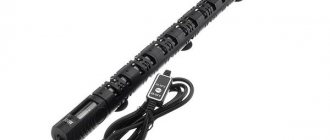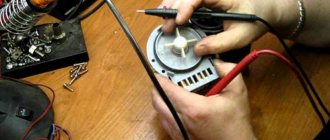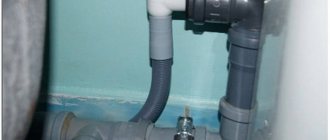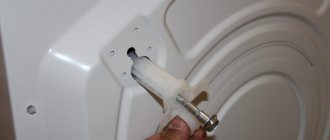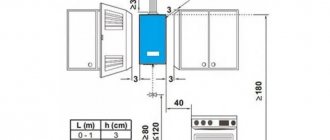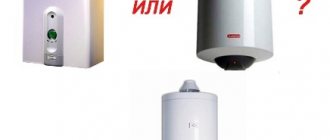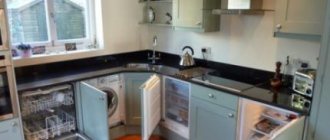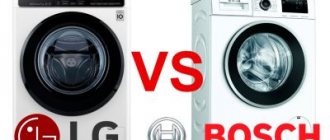When you open the faucet in your home to simply drink water, and a sluggish trickle flows from it, the thought immediately comes to mind of installing a pressure booster pump in the water supply line.
Adequate water pressure in the pipes is the key to the normal life of a person living in a private cottage, country house or high-rise apartment. This is very important for the trouble-free operation of household hydraulic machines and plumbing parts. This is one of the very important conditions for your comfortable living and the durability of the expensive water equipment of your home.
For normal operation of the main models of household hydraulic machines and plumbing units, a water pressure in the pipelines of 2 to 4 bar is sufficient. If you periodically or constantly have a lack of these indicators at the outlet of the intake taps, then you should understand the reasons for this deficiency and, if necessary, install booster pumps for yourself individually or for collective use.
Below we will describe the basic requirements for checking the performance of your water supply system, the criteria for choosing the appropriate equipment, and consider the different types of pumps for increasing water pressure in mains from different manufacturers.
Comparative scale of technical characteristics of water pressure in pumps of various types
Global pump manufacturers use the following units for measuring water pressure for the pressure characteristics of different types of pumps:
For quick approximate household calculations, approximate ratios of these quantities are suitable:
In practice, for the normal operation of household hydraulic equipment with automation, the use of flow valves and the operation of bathrooms, the operation of geysers and boilers, it is enough to maintain the water pressure in the pipelines within 2-4 bar for all major models of household water devices.
Possible reasons for the lack of water pressure in the mains
The lack of water pressure in your pipelines for high-rise apartments may be due to several reasons:
- Daily fluctuations in water pressure in the water supply due to the frequency of use of the resource by the residents of the house;
- Lack of design capacity of general-use pumping equipment from the service organization;
- Temporary deposits of rust and salts inside the pipeline that clog the body of the water riser:
- Clogged water filters in the water supply connection system:
In such cases, you should interview neighbors on the floor and residents of the upper and lower floors of an apartment building to find out what water pressure usually occurs in their apartments. This way you can identify the local cause of low pressure in your particular case. It will already be possible to make the right decision to eliminate these problems or settle on the option of purchasing a high-pressure water pump individually or for public use, having agreed on this issue with other residents of the entrance (riser) of the high-rise building.
In a private home, these reasons are of a similar type. But there may be various additional reasons for low water pressure in your pipeline:
- Large distance from the main water supply pump;
- Excessive elevation of the structure and location of the flow valves above the pump installation level;
- Inconsistency between the pressure data of the power plant and the specific layout of power and consumable units, etc.
Types of water pressure boosting pumps in pipelines
In practice, you can increase the pressure in the water artery using 2 well-known types of pumps:
- By inserting a circulation pump with a wet or dry rotor into the water supply line;
- By installing into the main line an additional self-priming power unit or an automatic pumping station based on this type of pump.
Diagrams of approximate connection of pressure booster pumps of various types:
Electric circulation pumps help in cases where it is necessary to increase the water pressure in the pipeline with a stable supply, but low pressure, reaching no more than 1 - 1.5 bar. In multi-storey buildings, using this type of pump it is unlikely that it will be possible to create a sufficiently stable pressure for all residents of the riser, even if you install 2 or more pumps. This option is more suitable for individually increasing water pressure in a separate apartment. This is, so to speak, a “home” option for stabilizing pressure.
For this reason, in apartment buildings with large number of floors, it is better to use a self-priming pump with higher capacity or a pumping station with appropriate automatic water pressure with its own hydraulic accumulator.
With this option, you will not bother yourself with the problems of turning the pump on and off; the automation will do it for you.
When installing any type of pump, it should be taken into account that if there is temporarily no water pressure at all in the taps of a high-rise building on the upper floors, then installing a booster pump will not correct this situation. The pump requires at least a minimum water pressure that meets technical limitations in order to increase it to the desired level.
If you install any booster pump only in your apartment, then keep in mind that it will create a discharge effect in the common pipeline before it. And air will be sucked into this rarefied space. It would be good if the pump was automatically protected from dry running and its motor would not burn out, but it would constantly turn off. In this case, you create an even greater pressure drop in the common water supply pipe. If other residents of your entrance or riser follow your example, this will lead to even more disastrous results with water and real “sanctions” from the water supply organization.
Self-priming pumps are limited by the amount of water rise along the installation height from the water surface to 7-8 meters (maximum 12). You also cannot install a large reservoir for a circular pump with a supply of water in a medium-sized apartment. You will have to negotiate and cooperate with your neighbors to install such a container in the attic of the house.
The most competent and comprehensive solution to these problems may be the installation of a full-fledged automatic station with a self-priming centrifugal pump. The power device must be of high performance. Contain your own hydraulic accumulator of the maximum possible volume and fully automate the water supply process. This station can be connected to the basement collector of the common riser of the general water supply or to an autonomous source. This is the only way to create the required water pressure at the outlet of all taps and not aggravate the situation for the neighbors.
Submersible pump for water supply - connection diagram
The well pump is lowered into the source strictly in its center to avoid the float touching the walls; it is tied to a rigid transverse pipe, angle, or metal profile inserted into the punched hole in the walls along with the pressure pipe of the water supply. The second option - hanging the pump on a transverse support located on top of the well walls - is simpler, but to connect to a water supply line located underground, you will still have to go down into the well. The calculated point for installing the pump from the surface of the earth is the depth of soil freezing in winter; the entire water supply system is deepened to a distance of about 0.5 below this mark.
To supply water to the house, pipes made of low-density polyethylene (HDPE), specially designed for use in water supply systems, are usually used. The pressure pipe is connected to the electric pump with a plastic fitting; its further connection to the water supply line is also made using an adapter corner plastic coupling; when supplied to the house using HDPE fittings, the line is easily connected to the internal water supply system.
Pumping equipment is connected according to a standard scheme using a pressure switch, pressure gauge, hydraulic accumulator (allows you to maintain pressure in the system), using special fitting plumbing fixtures (five-inlet fitting). Unlike downhole types, the dry-running relay can be excluded from the control automation - the submersible unit is protected from winding burnout by a float switch.
Rice. 10 Connection diagrams for a well electric pump
Selecting a water pressure booster pump
Circular pumps are divided into 2 groups:
We are accustomed to considering circular pumps only as elements of heating systems. But they have wider applications.
- Household pumps with wet rotor. They are more compact and quieter during operation. They do not require preventive maintenance to lubricate rubbing parts, since this occurs by washing the rotor shaft with water. They are easy and simple to install directly into the water supply pipe using a tie-in and do not require additional fastenings. But this group of pumps has low performance and low pressure indicators. In addition, these units are installed with a horizontal axis of the electric motor rotor.
- Circular pumps with a dry rotor have an asymmetrical housing shape towards the electric motor. They are cooled by a stream of external air from a special impeller. Requires additional fastening to the wall. They have better technical capabilities in terms of pressure and performance. They require regular lubrication of rubbing parts. They create quite a loud noise when working.
Both groups are suitable for cold and hot water, but require constant manual control of the on/off mode.
To save yourself from this, you need to choose a circular pump equipped with a water flow sensor. Then the pump will start only when the supply tap is opened and there is water in the line.
The same effect can be achieved by installing a separate flow sensor on any group of circular pumps. And if the pressure in the system is unstable and there is insufficient water in the water supply, you will need to install an additional pressure switch.
Some popular models of circular pumps from global manufacturers: Grundfos (Grundfos) UPA 15-90:
Circular pumps Jemix W15GR and WP series:
Direct-flow pumps Oasis (Oasis) CNP15/9:
Pressure booster pumps from the Wilo brand, PB and PW series
- Self-priming centrifugal pumps can operate when water pressure increases, either independently or as part of automatic pumping stations.
- Specialized stations for increasing water pressure from main water pipelines of the Gilex VODOMET M brand are used for inserting into the underwater part of individual sources. They have an additional flow-through filter unit for supplying already purified drinking water:
Specially designed pumping units for increasing water pressure from Grundfos: CMBE 3-62, 5-62, 1-44, 1-75, 3-30, 3-93 and others:
How to choose the right one and what to look for when buying a pump
When deciding which pump is best to install in a well, the following factors must be taken into account:
- Price. The cost of equipment is the main indicator when choosing a suitable model; the minimum price for Grundfos wells is 300 USD; domestic Gilex with similar parameters can be purchased several times cheaper (80 USD).
- Material of manufacture. Basically, well pump bodies are made of stainless steel or high-strength polymers, and their impellers are also made of high-quality plastic - this reduces the weight of the device. When purchasing, you should pay attention to the Chinese manufacturer - the fact is that in their products, the Chinese use sputtered aluminum - a mix - instead of copper windings. This leads to the fact that during operation, due to the higher resistance of aluminum, losses in the winding increase, heating of the housing increases, and efficiency decreases. Some Russian manufacturers are closely associated with Chinese companies; for example, equipment under the Vikhr brand is manufactured at Chinese enterprises and has an aluminum electric motor winding.
- Purpose of the pump. The main areas of use of pumping equipment in a suburban area are provision of permanent or temporary water supply and irrigation. When used for gardening purposes, it is better to choose a vibration electric pump - its cost is lower than all analogues, it is unpretentious to the quality of the working fluid, and temporary use for a short period will not cause significant damage to the well or well. In some cases, vibration models can be used for temporary water supply, but for permanent water supply, special submersible centrifugal pumps with a float switch for wells are used.
- Source parameters. The model must be selected in accordance with the flow rate of the source - the supply volume of the pumping unit should not exceed the natural replenishment of the reservoir with water. All models of submersible electric pumps indicate the depth of immersion under the water surface. Since the submersible pump is located in a well or borehole at a minimum distance of about 0.5 m from the bottom, the thickness of the water layer above it should not exceed the parameter specified in the technical passport.
- Pressure The pressure indicator for direct water supply is determined by calculation using simple formulas; it depends on the length of the horizontal and vertical sections of the water main and losses in the line; the part that goes to maintaining pressure in the system is also taken into account.
- Particle size. All models of submersible pumps are designed to draw clean drinking water; if the liquid contains fine sand, a modification is selected that allows operation with a certain particle size specified in the technical data sheet.
Fig.9 Submersible pump for water supply Gilex - technical characteristics
- Temperature. The manufacturer supplies the domestic market with installations for pumping water with standard parameters: working fluid temperature up to +35 C., ambient temperature up to +40 C. - it is clear that such a water temperature cannot be in a natural water supply source and any pumping equipment is suitable for these parameters.
- Model. For wells, special models of pumps with a float switch have been developed that turn off the power supply to the device when the water level in the well drops below the suction filter or at a certain mark (the depth of operation of the float can be adjusted). This device duplicates the dry running relay in the system, which can be installed at the request of the consumer. Well models from leading manufacturers (Grundfos) are equipped with a float water intake - this allows you to supply clean, unclouded water from the surface of the source, and not from the bottom area with a high content of sand particles, and there is no need to clean the water at home from sand.
- Other options. Less important factors that you should pay attention to when choosing a device are the length of the power cord, the presence of a built-in check valve, weight and overall dimensions, the length of the warranty period, the availability and location of the nearest technical service centers.
Electric pumps designed for drawing water from wells should not be used in wells, even if they meet the parameters. The fact is that well pumps are designed to draw water from shallow depths (their maximum pressure rarely exceeds 50 meters), and if you use a well pump with high pressure characteristics at low pressure, thereby increasing the volume of water supply, its efficiency will be unacceptably low.
